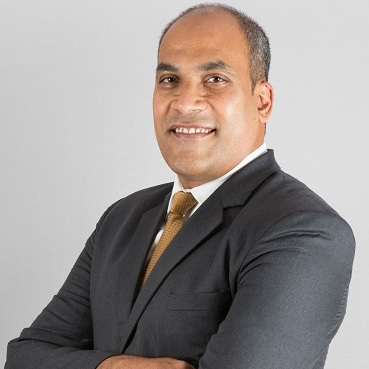 CyanConnode is a world leader in the design and development of narrowband RF mesh networks that enable Omni Internet of Things (IoT) communications. CyanConnode has been making immense contribution to India’s emerging smart grid landscape, having supported over 1 million smart meters with its Omnimesh RF communications infrastructure. Ratna Garapati, MD & CEO, CyanConnode India, in an exclusive conversation with T&D India tells about CyanConnode’s journey in India so far, and the exciting times in store. Garapati also touches upon technical aspects of communication infrastructure, explaining why RF (radio frequency) is the generally the best mode for smart metering, and more so, why Omnimesh RF is best suited for India’s smart metering pursuits.
CyanConnode is a world leader in the design and development of narrowband RF mesh networks that enable Omni Internet of Things (IoT) communications. CyanConnode has been making immense contribution to India’s emerging smart grid landscape, having supported over 1 million smart meters with its Omnimesh RF communications infrastructure. Ratna Garapati, MD & CEO, CyanConnode India, in an exclusive conversation with T&D India tells about CyanConnode’s journey in India so far, and the exciting times in store. Garapati also touches upon technical aspects of communication infrastructure, explaining why RF (radio frequency) is the generally the best mode for smart metering, and more so, why Omnimesh RF is best suited for India’s smart metering pursuits.
Let us start with a very fundamental question. In smart metering architecture, is RF one of the modes of communication infrastructure? What advantage does RF have over other alternatives that we understand could be PLC, etc?
RF technology is one of the strongest and most reliable communication infrastructure for smart metering. Unlike other communication modes, RF provides 100 per cent uptime making it suitable for real-time management in the effective implementation of smart grid system. Latency involved in the communication is almost negligible compared to GPRS based system. The biggest advantage of RF over other media/communication modes is the Self-forming and self-healing nature of RF, hence it is way more reliable. Once the RF canopy is developed then all the other smart equipment can also be communicated over the same canopy hence there is leap in automation in micro level and better monitoring of the network and effective implementation of Smart Grid. The Central Electricity Authority of India (CEA), in 2020, had come out with guidelines for communication system of smart meters and had captured a comparative study of RF and GPRS. Even that comparison clearly highlights the competitive edge of RF over GPRS in long term projects, similar to the ones that are now coming up under Revamped Distribution Sector Scheme (RDSS).
“Omnimesh is a scalable and robust system that provides multi-technology communications to support Smart Grid AMI solutions.”
Tell us about the innovative Omnimesh RF AMI platform launched in 2018. How does it compare with other/conventional RF platforms?
Delivered as part of CyanConnode’s Omni IoT platform, Omnimesh is a scalable and robust system that provides cost-effective, multi-technology communications to support Smart Grid AMI solutions. Omnimesh infrastructure enables utilities to operate innovative commercial models, improve customer experience, automate billing, rapidly locate and resolve outages, reduce distribution issues and losses and manage demand in real time during peak periods. Choosing Omnimesh future-proofs utilities’ investments, allowing existing enterprise applications to scale, and enabling new business applications to be deployed over the same infrastructure.
Some of the salient features of CyanConnode’s Omnimesh RF Communications infrastructure are:
- Edge Computing: Facilitates optimization of data payload enabling faster data processing at the node level ensuring reliable transmission of data
- Network Management System: CyanConnode’s solution architecture is the only one to provide NMS for cellular meters in India. It ensures real time visibility and monitoring of communication node status through geo mapping.
- Secure: Omnimesh provides standards-based, critical infrastructure grade security that comprises Public Key Infrastructure and certificate management, Key Storage in Hardware Security Modules and state-of the-art cryptography that helps ensure confidentiality, integrity and availability of business data and functions.
- Omnimesh Integrated Gateway boosts physical security by including gateway functions inside the protected perimeter of a standard smart meter.
- Ease of integration and deployment: Omnimesh enables rapid integration through API or secure connection to in-field SCADA system, which supports large scale networks (of Omnimesh-based meters) to be deployed efficiently and robustly, with zero commissioning and minimal human intervention
Why do you think is the Omnimesh platform is best suited for India?
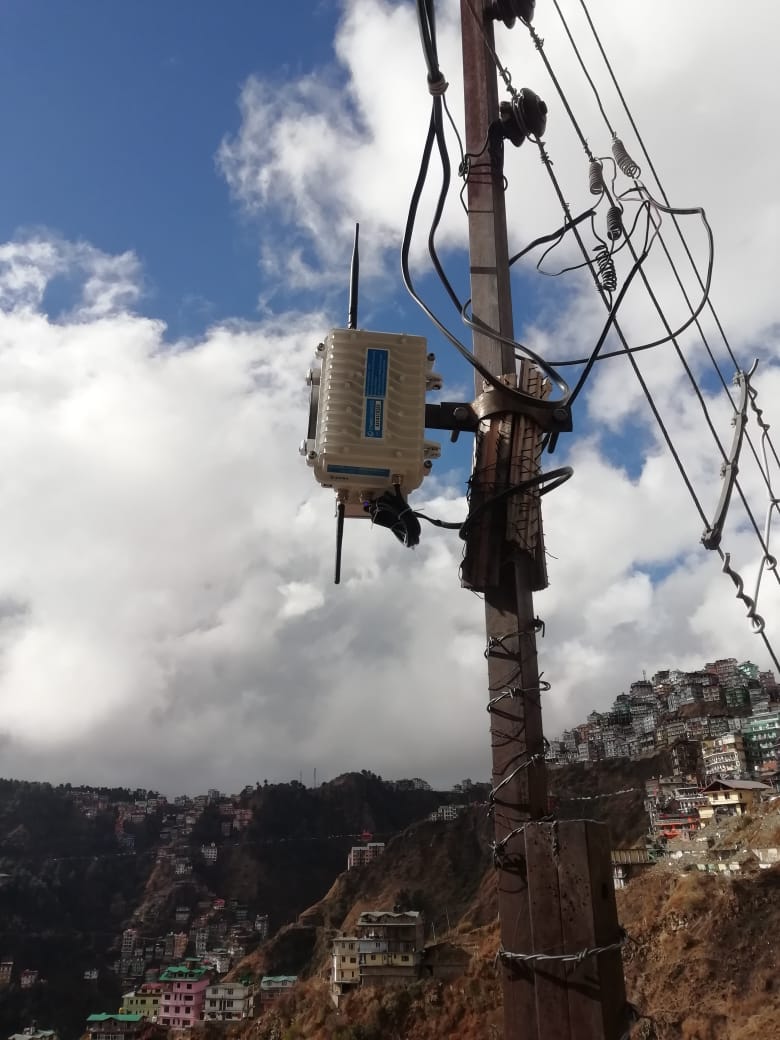 Omnimesh sub-GHz, narrowband RF mesh is a flexible and high-performing communication technology. In dense urban environments RF mesh provides unparalleled deep-indoor coverage and RF spectrum efficiency. RF mesh can hop kilometers at a time to cover sparse rural deployments. CyanConnode achieved a range of 4.2 km through regular RF nodes in Shimla, Himachal Pradesh, clearly emphasizing that its Omnimesh architecture is the best solution for Smart Metering in India with best possible coverage of urban, dense, hilly, agricultural & semi-urban areas while delivering the desired SLAs.
Omnimesh sub-GHz, narrowband RF mesh is a flexible and high-performing communication technology. In dense urban environments RF mesh provides unparalleled deep-indoor coverage and RF spectrum efficiency. RF mesh can hop kilometers at a time to cover sparse rural deployments. CyanConnode achieved a range of 4.2 km through regular RF nodes in Shimla, Himachal Pradesh, clearly emphasizing that its Omnimesh architecture is the best solution for Smart Metering in India with best possible coverage of urban, dense, hilly, agricultural & semi-urban areas while delivering the desired SLAs.
Some of the key reasons why Omnimesh platform is the way ahead for Indian smart metering ambition:
- Omnimesh solution meets the technical requirements for AMI in India (IS16444)
- Fully certified WPC compliant network elements
- Reliable and secure communication with 24×7 data availability of >99%
- Rapidly locate and resolve outages
- Deep penetration through all terrains- no “not-spots”
- Best coverage for last mile- no single point of failure
- Cost effective, simple to deploy and build-as-you-go network
Has CyanConnode introduced Omnimesh in other parts of the world (outside India)? Which countries has CyanConnode touched so far?
Other than India, CyanConnode is deploying in Europe (UK and Sweden), Middle-East (Dubai), Africa (Nigeria) and Asia Pacific (Thailand).
The Indore smart metering project, as we understand, has been a huge success not just for CyanConnode but also to India’s smart metering programme. Tell us more.
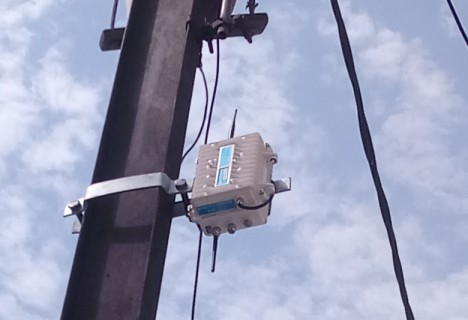 We started the Indore Smart Metering project in 2018, with an initial order of 75,000 RF nodes. Basis our performance we received a follow-on order of 55,000 and a fresh order of 350,000 RF nodes in 2019, making it the largest RF-based smart metering implementation in India covering approximately 8 per cent of the total consumer base of Madhya Pradesh Paschim Kshetra Vidyut Vitaran Company Ltd (MPWZ or Madhya Pradesh Western Zone)
We started the Indore Smart Metering project in 2018, with an initial order of 75,000 RF nodes. Basis our performance we received a follow-on order of 55,000 and a fresh order of 350,000 RF nodes in 2019, making it the largest RF-based smart metering implementation in India covering approximately 8 per cent of the total consumer base of Madhya Pradesh Paschim Kshetra Vidyut Vitaran Company Ltd (MPWZ or Madhya Pradesh Western Zone)
Following are some of the key factors highlighting our success story:
- Consistently delivering ≥ 99% of SLAs (service level agreement). The phase-1 project (MPWZ-1) is under AMC for last 45 months, has witnessed every possible harsh environment.
- Collection of 15 minutes-Instantaneous parameters, Block Data and Daily Energy Data Totaling to 193 samples per meter per day
- Billing Efficiency Improvement by ~24%, Collection Efficiency by ~ 12%, AT&C loss reduction by ~ 22%, CRPU improvement by ~ 30%
- Return on Investment within 2.5 years of implementation
- MPWZ has won many prestigious awards for its AMI implementation
“We have been recently given a single order for 1 million RF nodes to be deployed in the state of Bihar and are gearing up for that as well.”
We also understand that the Indore model was replicated to other parts of the country. Please elaborate.
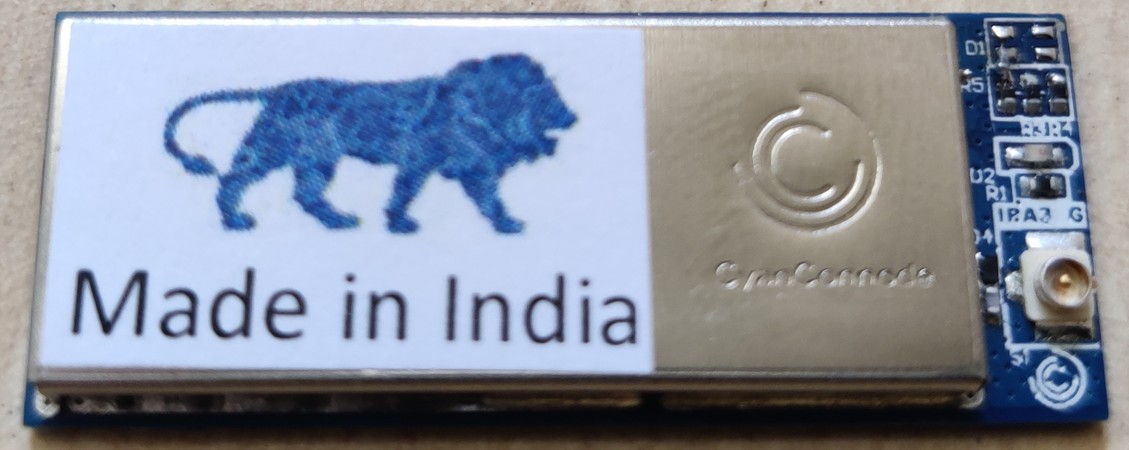 Post the success of Indore, we are implementing and successfully replicating our Omnimesh RF communication infrastructure in Himachal Pradesh, Rajasthan, Assam and Tamil Nadu. Our order book from these four states is over 1 million RF nodes and I am happy to state that we are delivering over 99 per cent SLAs in all these states as well.
Post the success of Indore, we are implementing and successfully replicating our Omnimesh RF communication infrastructure in Himachal Pradesh, Rajasthan, Assam and Tamil Nadu. Our order book from these four states is over 1 million RF nodes and I am happy to state that we are delivering over 99 per cent SLAs in all these states as well.
We have been recently given a single order for 1 million RF nodes to be deployed in the state of Bihar and are gearing up for that as well.
Please tell us in brief about how CyanConnode as providers of the RF nodes coordinate with other agencies involved in a typical smart metering project.
As the market is evolving and market requirements are rapidly increasing there are more and more meter manufacturers that are very keen to participate in these new opportunities. We at CyanConnode are supporting the meter manufacturers and MDMS players by integrating and having the market ready solutions available. These solutions are being considered by AMISPs for participating in competitive bidding.
What has been CyanConnode’s achievement in India so far with respect to providing the RF communication infrastructure? What has been the geographical footprint, in terms of states and UTs covered?
CyanConnode is the largest private player in India providing Smart IoT Communication solutions for AMI infrastructure. CyanConnode’s RF Smart Mesh Networks are designed for rapid deployment, while giving exceptional performance and competitive total cost of ownership (TCO). CyanConnode has been active in India since 2009 and executed the first Smart Metering project in the year 2014.
CyanConnode is currently active in ten states (Madhya Pradesh, Rajasthan, Himachal Pradesh, Tamil Nadu, Gujarat, Karnataka, Maharashtra, Andhra Pradesh, Assam and Bihar) in the country and has a current order book of 2.6 million nodes of which over 1.1 million have been installed and are communicating.
We presume that CyanConnode has worked with both private as well as state government discoms in India? Do you perceive any difference in dealing with these two forms of ownership?
That is correct. CyanConnode had worked majorly with government discoms but also provided solutions to some major private utilities. Our experience has varied between all our implementations and we took lot of learning from each of the customers. Each customer is different and so are their demands and approach to solve a problem. We have aligned to the goals set by customers and due to this we do not see too much difference between government and private utilities.
“Despite all challenges, CyanConnode continues to achieve over 99 per cent SLAs.”
What are the typical challenges faced by RF communication providers whilst executing smart metering projects in India? Which has been so far the most challenging project for CyanConnode in India?
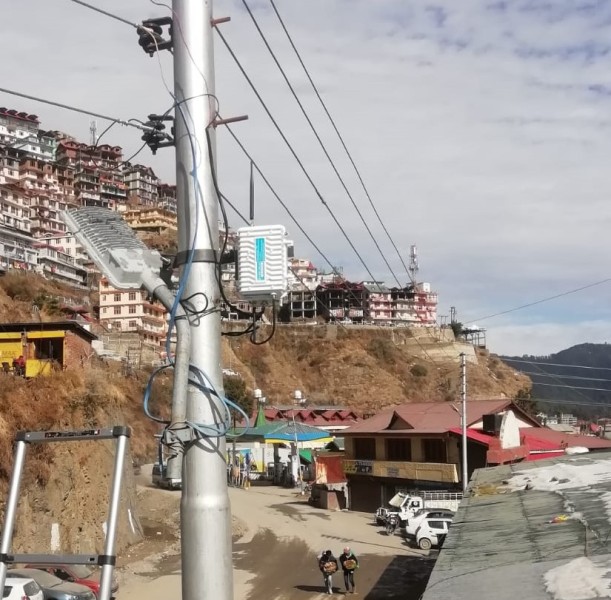 I would rate our project in Himachal Pradesh for HPSEB as the one filled with challenges and lots of learning. Himachal was the first region where we deployed Omnimesh RF infrastructure in a hilly region. Difficult terrains such as hilly areas offer its own set of challenges such as harsh weather (extreme snowfall or rainfall), challenges in installation owing to dangerous terrain, and wild life,extreme power surge, lack of line of sight, etc. We have learnt on the job and due to perseverance of the team and our on-field experts we have been able to overcome a majority of the challenges and continue to correct the ongoing bottlenecks through continuous maintenance and monitoring.
I would rate our project in Himachal Pradesh for HPSEB as the one filled with challenges and lots of learning. Himachal was the first region where we deployed Omnimesh RF infrastructure in a hilly region. Difficult terrains such as hilly areas offer its own set of challenges such as harsh weather (extreme snowfall or rainfall), challenges in installation owing to dangerous terrain, and wild life,extreme power surge, lack of line of sight, etc. We have learnt on the job and due to perseverance of the team and our on-field experts we have been able to overcome a majority of the challenges and continue to correct the ongoing bottlenecks through continuous maintenance and monitoring.
I am proud to say that, despite all the above challenges, CyanConnode continues to achieve over 99 per cent SLAs and as well was able to achieve a range of 4.2 km through regular RF nodes in Shimla, Himachal Pradesh, clearly emphasizing that its Omnimesh solution is the best architecture for Smart Metering in India with best possible coverage of urban, rural, dense, hilly, agricultural & semi-urban areas while delivering the desired SLAs.
What is your overall view on India’s mission of rolling out 25 crore prepaid energy meters over the next 4-5 years? Please discuss the business opportunity that CyanConnode sees here.
Currently over 1.1 million smart meters in India are communicating on CyanConnode’s RF network, which is approximately 22 per cent of the total installed base of smart meters in India. We are consistently delivering high SLAs of >99 per cent, which are now a base requirement for smart prepaid metering. With our knowledge of Indian ecosystem and our experience over the past decade we are confident of maintaining our leadership position in future as well.
“To be an integral part of India’s smart grid journey is exciting as well as full of responsibility.”
Having supported over 1 million smart meters in India with RF communication infrastructure, how do you see the years ahead in the subcontinent?
The 1-million smart meters mark — while being a milestone for CyanConnode — is still only the tip of the iceberg. As of today, approximately 4.5 million smart meters have been deployed in total in India and about 246 million are yet to be deployed. There is a huge potential and market for us to capture. The coming years are full of excitement and challenge as such a number has not been achieved anywhere in the world and to be an integral part of this journey is exciting as well as full of responsibility. Our teams are as well working on opportunities in Asia Pacific, Middle East, Africa and, of course, Europe.


